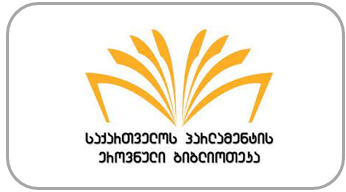დღენაკლობა: საზოგადოებრივი ჯანდაცვის გამოწვევა
DOI:
https://doi.org/10.52340/healthecosoc.2024.08.01.03საკვანძო სიტყვები:
ავადობა, სიკვდილიანობა, ნაადრევი მშობიარობა, საზოგადოებრივი ჯანდაცვა, ახალშობილები, დღენაკლობაანოტაცია
დღენაკლი ახალშობილები ცოცხალშობილთა დაახლოებით 10.6%-ს შეადგენს მთელს მსოფლიოში და ეს სტატისტიკა მზარდია. თუმცა, ასევე იზრდება ექსტრემალურად დღენაკლი ახალშობილების გადარჩენის მაჩვენებელიც. დღენაკლობის ტვირთი დაკავშირებულია დღენაკლების 5 წლამდე სიკვდილიანობისა და ავადობის მაჩვენებლებთან, რასაც ეკონომიკური ზეგავლენა აქვს საზოგადოებრივ ჯანდაცვაზე. დღენაკლობის მოკლევადიანი და გრძელვადიანი გამოსავლები კავშირშია გესტაციურ ასაკთან. დღენაკლ ახალშობილებს აქვთ გადარჩენის დაბალი მაჩვენებელი დროულ ახალშობილებთან შედარებით. გადარჩენის შემთხვევაში კი ხშირია ფსიქო-სომატური, სენსორული, კოგნიტური და ფიზიკური ჯანმრთელობის დარღვევა. ნაადრევი მშობიარობით დაბადებულ ინდივიდებს ხშირად მთელი ცხოვრება სჭირდებათ მხარდაჭერა, რაც გამოწვევებს უქმნის ჯანდაცვის სისტემებსა და საზოგადოებას. საზოგადოებრივი ჯანდაცვის ეფექტურობა შესაძლოა გადამწყვეტი იყოს ნაადრევი მშობიარობის პრევენციაში, თუ ის სწორ მონაცემებს მიაწოდებს ჯანდაცვის პოლიტიკის მენეჯერებსა და კანონმდებლებს, რითაც მოდიფიცირებადი რისკ-ფაქტორების შემცირება მოხდება. ჯანმრთელობის სოციალურ ფაქტორებს შეიძლება ჰქონდეს ძალიან მაღალი გავლენა ნაადრევი მშობიარობის გამოსავლებზე.
წყაროები
ვერულავა თ, გაგუა ი. (2023). ორსულთა ცოდნა, დამოკიდებულება და ქცევა რკინადეფიციტური ანემიის პრევენციაში. ორბელიანი, 1 (6).
სიბოშვილი ლ., ყაზახაშვილი ნ. (2024). ნაადრევი მშობიარობის ტენდენციები საქართველოს დაბადების რეგისტრის მონაცემების მიხედვით. ჯანდაცვის პოლიტიკა, ეკონომიკა და სოციოლოგია, 7(2).
Federation of Gynecology and Obstetrics (FIGO). (1977). WHO: recommended definitions, terminology and format for statistical tables related to the perinatal period and use of a new certificate for the cause of perinatal deaths: modifications recommended by FIGO as amended October 14, 1976. Acta Obstet Gynecol Scand, 56(3), 247–253.
Liu, L., Johnson, H. L., Cousens, S., Perin, J., Scott, S., Lawn, J. E., ... Child Health Epidemiology Reference Group of WHO and UNICEF. (2012). Global, regional, and national causes of child mortality: an updated systematic analysis for 2010 with time trends since 2000. Lancet, 379(9832), 2151–2161.
Laws, P., Grayson, N., & Sullivan, E. (2006). Australia’s mothers and babies 2004. Volume 18. Sydney: Perinatal Statistics Series.
Blencowe, H., Cousens, S., Oestergaard, M. Z., Chou, D., Moller, A. B., Narwal, R., ... et al. (2012). National, regional, and worldwide estimates of preterm birth rates in the year 2010 with time trends since 1990 for selected countries: a systematic analysis and implications. Lancet, 379(9832), 2162–2172.
March of Dimes. (2012). Born too soon: the global action report on preterm birth. Geneva: World Health Organization.
Steer, P. (2005). The epidemiology of preterm labour. BJOG, 112(Suppl 1), 1–3.
Ministério da Saúde, Portugal. Direção-Geral da Saude. (2012). Natalidade, mortalidade infantil, fetal e perinatal, 2008/2012. Lisboa: Direção-Geral da Saúde.
OECD Publishing. (2013). Health at a glance 2013: OECD indicators. Paris: OECD.
Wilson-Costello, D., Friedman, H., Minich, N., Fanaroff, A. A., & Hack, M. (2005). Improved survival rates with increased neurodevelopmental disability for extremely low birth weight infants in the 1990s. Pediatrics, 115(4), 997–1003.
Project EN. (2015). EuroNeoNet annual report for VLGAI & individual report for each unit participating in the EuroNeoNet project. Bizkaia, Spain: ENN Project.
Allen, M. C., Cristofalo, E. A., & Kim, C. (2011). Outcomes of preterm infants: morbidity replaces mortality. Clin Perinatol, 38(3), 441–454.
Stoll, B. J., Hansen, N. I., Bell, E. F., Shankaran, S., Laptook, A. R., Walsh, M. C., ... Eunice Kennedy Shriver National Institute of Child Health and Human Development Neonatal Research Network. (2010). Neonatal outcomes of extremely preterm infants from the NICHD Neonatal Research Network. Pediatrics, 126(3), 443–456.
Costeloe, K., Hennessy, E., Gibson, A. T., Marlow, N., & Wilkinson, A. R.; for the EPICure Study Group. (2000). The EPICure study: outcomes to discharge from the hospital for infants born at the threshold of viability. Pediatrics, 106(4), 659–671.
Bonamy, A., Zeitlin, J., Piedvache, A., Maier, R., van Heijst, A., Varendi, H., ... et al. (2019). Wide variation in severe neonatal morbidity among very preterm infants in European regions. Arch Dis Child Fetal Neonatal Ed, 104(1), F36-F45.
Soleimani, F., Zaheri, F., & Abdi, F. (2014). Long-term neurodevelopmental outcomes after preterm birth. Iran Red Crescent Med J, 16(6), e17965.
Hack, M., Cartar, L., Schluchter, M., Klein, N., & Forrest, C. B. (2007). Self-perceived health, functioning and well-being of very low birth weight infants at age 20 years. J Pediatr, 151(6), 635–641.
Pierrat, V., Marchand-Martin, L., Arnaud, C., Kaminski, M., Resche-Rigon, M., Lebeaux, C., ... EPIPAGE-2 writing group. (2017). Neurodevelopmental outcome at 2 years for preterm children born at 22 to 34 weeks’ gestation in France in 2011: EPIPAGE-2 cohort study. BMJ, 358, j3448.
Glass, H. C., Costarino, A. T., Stayer, S. A., Brett, C. M., Cladis, F., & Davis, P. J. (2015). Outcomes for extremely premature infants. Anesth Analg, 120(6), 1337–1351.
Raju, T. N., Pemberton, V. L., Saigal, S., Blaisdell, C. J., Moxey-Mims, M., Buist, S.; Adults Born Preterm Conference Speakers and Discussants. (2017). Long-term healthcare outcomes of preterm birth: an executive summary of a conference sponsored by the National Institutes of Health. J Pediatr, 181, 309–318.e1.
OECD. (2017). Health at a glance 2017: OECD indicators. Paris: OECD.
Veen, S., Ens-Dokkum, M. H., Schreuder, A. M., Verloove-Vanhorick, S. P., Brand, R., ... The Collaborative Project on Preterm and Small for Gestational Age Infants (POPS) in The Netherlands. (1991). Impairments, disabilities, and handicaps of very preterm and very-low-birth-weight infants at five years of age. Lancet, 338(8758), 33–36.
Larroque, B., Ancel, P. Y., Marret, S., Marchand, L., André, M., Arnaud, C., ... EPIPAGE Study group. (2008). Neurodevelopmental disabilities and special care of 5-year-old children born before 33 weeks of gestation (the EPIPAGE study): a longitudinal cohort study. Lancet, 371(9615), 813–820.
Verloove-Vanhorick, S. P., Verwey, R. A., Brand, R., Gravenhorst, J. B., Keirse, M. J., & Ruys, J. H. (1986). Neonatal mortality risk in relation to gestational age and birthweight. Results of a national survey of preterm and very-low-birthweight infants in the Netherlands. Lancet, 1(8472), 55–57.
Platt, M. J. (2014). Outcomes in preterm infants. Public Health, 128(5), 399–403.
Crump, C., Sundquist, K., Sundquist, J., & Winkleby, M. A. (2011). Gestational age at birth and mortality in young adulthood. JAMA, 306(11), 1233–1240.
Saigal, S., & Doyle, L. W. (2008). An overview of mortality and sequelae of preterm birth from infancy to adulthood. Lancet, 371(9608), 261–269.
Farooqi, A., Hägglöf, B., Sedin, G., & Serenius, F. (2011). Impact at age 11 years of major neonatal morbidities in children born extremely preterm. Pediatrics, 127(5), e1247–e1257.
Hodek, J. M., von der Schulenburg, J. M., & Mittendorf, T. (2011). Measuring economic consequences of preterm birth - Methodological recommendations for the evaluation of personal burden on children and their caregivers. Health Econ Rev, 1(1), 6.
Liu, L., Oza, S., Hogan, D., Perin, J., Rudan, I., Lawn, J. E., ... et al. (2015). Global, regional, and national causes of child mortality in 2000-13, with projections to inform post-2015 priorities: an updated systematic analysis. Lancet, 385(9966), 430–440.
Mwaniki, M. K., Atieno, M., Lawn, J. E., & Newton, C. R. (2012). Long-term neurodevelopmental outcomes after intrauterine and neonatal insults: a systematic review. Lancet, 379(9814), 445–452.
Ho, L. Y. (2018). Follow-up care and outcome evaluation of high-risk preterm infants: a life-course commitment. Ann Acad Med Singapore, 47(2), 51–55.
Barfield, W. D. (2018). Public health implications of very preterm birth. Clin Perinatol, 45(3), 565–577.
Vogel, J. P., Chawanpaiboon, S., Watananirun, K., Lumbiganon, P., Petzold, M., Moller, A. B., ... et al. (2016). Global, regional and national levels and trends of preterm birth rates for 1990 to 2014: protocol for development of World Health Organization estimates. Reprod Health, 13(1), 76.
Blencowe, H., Cousens, S., Chou, D., Oestergaard, M., Say, L., Moller, A. B., ... Born Too Soon Preterm Birth Action Group. (2013). Born too soon: the global epidemiology of 15 million preterm births. Reprod Health, 10(1 Suppl 1), S2.
Nogueira, P. J., Costa, A. J., Alves, M. I., & Rosa, M. V. (2013). Estudo comparativo do número de óbitos e causas de morte da mortalidade infantil e suas componentes (2009-2011). Lisboa: Direção de Serviços de Informação e Análise. Direção Geral da Saúde.
Crump, C. (2014). Medical history taking in adults should include questions about preterm birth. BMJ, 349 aug01 2, g4860.
Chawanpaiboon, S., Vogel, J. P., Moller, A. B., Lumbiganon, P., Petzold, M., Hogan, D., ... et al. (2019). Global, regional, and national estimates of levels of preterm birth in 2014: a systematic review and modelling analysis. Lancet Glob Health, 7(1), e37–e46.
Euro-Peristat Project. (2018). European Perinatal Health Report. Core indicators of the health and care of pregnant women and babies in Europe in 2015. November 2018. Available at www.europeristat.com.
Beck, S., Wojdyla, D., Say, L., Betran, A. P., Merialdi, M., Requejo, J. H., ... et al. (2010). The worldwide incidence of preterm birth: a systematic review of maternal mortality and morbidity. Bull World Health Organ, 88(1), 31–38.
Zeitlin, J., Szamotulska, K., Drewniak, N., Mohangoo, A. D., Chalmers, J., Sakkeus, L., ... Euro-Peristat Preterm Study Group. (2013). Preterm birth time trends in Europe: a study of 19 countries. BJOG, 120(11), 1356–1365.
Zeitlin, J., Mohangoo, A., & Delnord, M. (2010). European Perinatal Health Report. Health and care of pregnant women and babies in Europe in 2010. Available at www.europeristat.com.
Goldenberg, R. L., Gravett, M. G., Iams, J., Papageorghiou, A. T., Waller, S. A., Kramer, M., ... et al. (2012). The preterm birth syndrome: issues to consider in creating a classification system. Am J Obstet Gynecol, 206(2), 113–118.
INE. (2017). Estatísticas demográficas 2016. Lisboa: Instituto Nacional de Estatística.
Behrman, R. E., Butler, A. S.; Committee on Understanding Premature Birth and Assuring Healthy Outcomes. (2007). Preterm birth: causes, consequences, and prevention. Washington (DC): National Academies Press.
Main, D. M., Gabbe, S. G., Richardson, D., & Strong, S. (1985). Can preterm deliveries be prevented? Am J Obstet Gynecol, 151(7), 892–898.
Martin, J. A., & Osterman, M. J. (2018). Describing the increase in preterm births in the United States, 2014-2016. NCHS Data Brief, 312(312), 1–8.
McDonald, S. D., Han, Z., Mulla, S., & Beyene, J.; Knowledge Synthesis Group. (2010). Overweight and obesity in mothers and risk of preterm birth and low birth weight infants: systematic review and meta-analyses. BMJ, 341 jul20 1, c3428–3428.
Lawn, J. (2009). 4 million neonatal deaths: an analysis of available cause-of-death data and systematic country estimates with a focus on “birth asphyxia” (PhD thesis). London: UCL.
Manuck, T. A., Rice, M. M., Bailit, J. L., Grobman, W. A., Reddy, U. M., Wapner, R. J., ... Eunice Kennedy Shriver National Institute of Child Health and Human Development Maternal-Fetal Medicine Units Network. (2016). Preterm neonatal morbidity and mortality by gestational age: a contemporary cohort. Am J Obstet Gynecol, 215(1), 103.e1–14.
Seri, I., & Evans, J. (2008). Limits of viability: definition of the gray zone. J Perinatol, 28(S1 Suppl 1), S4–S8.
Fanaroff, A. A., Stoll, B. J., Wright, L. L., Carlo, W. A., Ehrenkranz, R. A., Stark, A. R., ... NICHD Neonatal Research Network. (2007). Trends in neonatal morbidity and mortality for very low birthweight infants. Am J Obstet Gynecol, 196(2), 147.e1–8.
Rüegger, C., Hegglin, M., Adams, M., & Bucher, H. U.; Swiss Neonatal Network. (2012). Population based trends in mortality, morbidity and treatment for very preterm- and very low birth weight infants over 12 years. BMC Pediatr, 12(1), 17.
Helenius, K., Sjörs, G., Shah, P. S., Modi, N., Reichman, B., Morisaki, N., ... International Network for Evaluating Outcomes (iNeo) of Neonates. (2017). Survival in very preterm infants: an international comparison of 10 national neonatal networks. Pediatrics, 140(6), e20171264.
Cheong, J., Lee, K., Boland, R., Spittle, A., Opie, G., Burnett, A., ... et al. (2018). Changes in long-term prognosis with increasing postnatal survival and the occurrence of postnatal morbidities in extremely preterm infants offered intensive care: a prospective observational study. Lancet Child Adolesc Health, 2(12), 872–879.
Sociedade Portuguesa de Neonatologia. (2019). Registo nacional do MBP (Internet). Lisboa: Sociedade Portuguesa de Neonatologia. Available from: http://www.spneonatologia.pt/documents/presentations/registo-nacional-do-mbp/
Blencowe, H., Lee, A. C., Cousens, S., Bahalim, A., Narwal, R., Zhong, N., ... et al. (2013). Preterm birth-associated neurodevelopmental impairment estimates at regional and global levels for 2010. Pediatr Res, 74(S1 Suppl 1), 17–34.
Robaei, D., Kifley, A., Gole, G. A., & Mitchell, P. (2006). The impact of modest prematurity on visual function at age 6 years: findings from a population-based study. Arch Ophthalmol, 124(6), 871–877.
Younge, N., Goldstein, R. F., Bann, C. M., Hintz, S. R., Patel, R. M., Smith, P. B., ... Eunice Kennedy Shriver National Institute of Child Health and Human Development Neonatal Research Network. (2017). Survival and neurodevelopmental outcomes among periviable infants. N Engl J Med, 376(7), 617–628.
Hadders-Algra, M. (2002). Two distinct forms of minor neurological dysfunction: perspectives emerging from a review of data of the Groningen Perinatal Project. Dev Med Child Neurol, 44(8), 561–571.
Volpe, J. J. (2009). Brain injury in premature infants: a complex amalgam of destructive and developmental disturbances. Lancet Neurol, 8(1), 110–124.
Mukerji, A., Shah, V., & Shah, P. S. (2015). Periventricular/intraventricular hemorrhage and neurodevelopmental outcomes: a meta-analysis. Pediatrics, 136(6), 1132–1143.
Walsh, B., Inder, T., & Volpe, J. (2017). Pathophysiology of intraventricular hemorrhage in the neonate. In R. Polin (Ed.), Fetal and Neonatal Physiology (5th ed., pp. 1333–1349.e6). New York: Elsevier.
Inder, T. E., & Volpe, J. J. (2011). Intraventricular hemorrhage in the neonate. In R. Polin, W. Fox, & S. Abman (Eds.), Fetal and Neonatal Physiology (3rd ed., pp. 1830–1847). Philadelphia: Saunders.
Volpe, J. J. (2001). Intracranial hemorrhage: germinal matrix – intraventricular hemorrhage of the premature infant. In J. J. Volpe (Ed.), Neurology of the Newborn (4th ed., pp. 517–588). Philadelphia: Saunders.
Murphy, B. P., Inder, T. E., Rooks, V., Taylor, G. A., Anderson, N. J., Mogridge, N., et al. (2002). Posthemorrhagic ventricular dilatation in the premature infant: natural history and predictors of outcome. Archives of Disease in Childhood. Fetal and Neonatal Edition, 87(1), F37–F41.
Wilson-Costello, D., & Payne, A. (2015). Early childhood neurodevelopmental outcomes of high-risk neonates. In Nelson Textbook of Pediatrics (10th ed., pp. 1018–1031). Philadelphia: Saunders.
Joo, J. W., Choi, J. Y., Rha, D. W., Kwak, E. H., & Park, E. S. (2015). Neuropsychological outcomes of preterm birth in children with no major neurodevelopmental impairments in early life. Annals of Rehabilitation Medicine, 39(5), 676–685.
Edwards, J., Berube, M., Erlandson, K., Haug, S., Johnstone, H., Meagher, M., et al. (2011). Developmental coordination disorder in school-aged children born very preterm and/or at very low birth weight: a systematic review. Journal of Developmental & Behavioral Pediatrics, 32(9), 678–687.
Danks, M., Maideen, M. F., Burns, Y. R., O’Callaghan, M. J., Gray, P. H., Poulsen, L., et al. (2012). The long-term predictive validity of early motor development in "apparently normal" ELBW survivors. Early Human Development, 88(8), 637–641.
Himmelmann, K., Hagberg, G., Beckung, E., Hagberg, B., & Uvebrant, P. (2005). The changing panorama of cerebral palsy in Sweden. IX. Prevalence and origin in the birth-year period 1995-1998. Acta Paediatrica, 94(3), 287–294.
Platt, M., Cans, C., Johnson, A., Surman, G., et al. (2007). Trends in cerebral palsy among infants of very low birthweight (<1500 g) or born prematurely (<32 weeks) in 16 European centres: a database study. The Lancet, 369(9555), 43–50.
Hagberg, B., Hagberg, G., Beckung, E., & Uvebrant, P. (2001). Changing panorama of cerebral palsy in Sweden. VIII. Prevalence and origin in the birth year period 1991-94. Acta Paediatrica, 90(3), 271–277.
Himmelmann, K., & Uvebrant, P. (2018). The panorama of cerebral palsy in Sweden part XII shows that patterns changed in the birth years 2007-2010. Acta Paediatrica, 107(3), 462–468.
Winter, S., Autry, A., Boyle, C., & Yeargin-Allsopp, M. (2002). Trends in the prevalence of cerebral palsy in a population-based study. Pediatrics, 110(6), 1220–1225.
Wilson-Costello, D., Friedman, H., Minich, N., Siner, B., Taylor, G., Schluchter, M., et al. (2007). Improved neurodevelopmental outcomes for extremely low birth weight infants in 2000-2002. Pediatrics, 119(1), 37–45.
Virella, D., Folha, T., Andrada, M., Cadete, A., Gouveia, R., Gaia, T., et al. (2018). Vigilância nacional da paralisia cerebral aos 5 anos de idade: crianças nascidas entre 2001 e 2007 (2nd ed.). Lisboa: Federação das Associações Portuguesas de Paralisia Cerebral.
Farooqi, A., Hägglöf, B., Sedin, G., Gothefors, L., & Serenius, F. (2006). Chronic conditions, functional limitations, and special health care needs in 10- to 12-year-old children born at 23 to 25 weeks gestation in the 1990s: a Swedish national prospective follow-up study. Pediatrics, 118(5), e1466–e1477.
Rudanko, S. L., Fellman, V., & Laatikainen, L. (2003). Visual impairment in children born prematurely from 1972 through 1989. Ophthalmology, 110(8), 1639–1645.
Chhablani, P. P., & Kekunnaya, R. (2014). Neuro-ophthalmic manifestations of prematurity. Indian Journal of Ophthalmology, 62(10), 992–995.
Webber, A. L., & Wood, J. (2005). Amblyopia: prevalence, natural history, functional effects, and treatment. Clinical and Experimental Optometry, 88(6), 365–375.
Blencowe, H., Lawn, J. E., Vazquez, T., Fielder, A., & Gilbert, C. (2013). Preterm-associated visual impairment and estimates of retinopathy of prematurity at regional and global levels for 2010. Pediatric Research, 74(Suppl 1), 35–49.
Yu, B., Guo, Q., Fan, G., & Liu, N. (2011). Assessment of cortical visual impairment in infants with periventricular leukomalacia: a pilot event-related fMRI study. Korean Journal of Radiology, 12(4), 463–472.
Hellström, A., Smith, L. E., & Dammann, O. (2013). Retinopathy of prematurity. The Lancet, 382(9902), 1445–1457.
O’Connor, A. R., Wilson, C. M., & Fielder, A. R. (2007). Ophthalmological problems associated with preterm birth. Eye (London, England), 21(10), 1254–1260.
Saigal, S., Stoskopf, B., Boyle, M., Paneth, N., Pinelli, J., Streiner, D., et al. (2007). Comparison of current health, functional limitations, and health care use of young adults who were born with extremely low birth weight and normal birth weight. Pediatrics, 119(3), e562–e573.
O’Connor, A. R., Stephenson, T., Johnson, A., Tobin, M. J., Moseley, M. J., Ratib, S., et al. (2002). Long-term ophthalmic outcome of low birth weight children with and without retinopathy of prematurity. Pediatrics, 109(1), 12–18.
Marlow, N., Wolke, D., Bracewell, M. A., & Samara, M.; EPICure Study Group. (2005). Neurologic and developmental disability at six years of age after extremely preterm birth. New England Journal of Medicine, 352(1), 9–19.
Saigal, S. L., Stoskopf, B. L., Streiner, D., & Burrows, E. (2001). Physical growth and current health status of infants who were of extremely low birth weight and controls at adolescence. Pediatrics, 108(2), 407–415.
Rushing, S., & Ment, L. R. (2004). Preterm birth: a cost-benefit analysis. Seminars in Perinatology, 28(6), 444–450.
Olusanya, B. O., Neumann, K. J., & Saunders, J. E. (2014). The global burden of disabling hearing impairment: a call to action. Bulletin of the World Health Organization, 92(5), 367–373.
Therien, J. M., Worwa, C. T., Mattia, F. R., & deRegnier, R. A. (2004). Altered pathways for auditory discrimination and recognition memory in preterm infants. Developmental Medicine and Child Neurology, 46(12), 816–824.
Cristobal, R., & Oghalai, J. S. (2008). Hearing loss in children with very low birth weight: current review of epidemiology and pathophysiology. Archives of Disease in Childhood. Fetal and Neonatal Edition, 93(6), F462–F468.
Engdahl, B., & Eskild, A. (2007). Birthweight and the risk of childhood sensorineural hearing loss. Paediatric and Perinatal Epidemiology, 21(6), 495–500.
Doyle, L. W., & Anderson, P. J.; Victorian Infant Collaborative Study Group. (2005). Improved neurosensory outcome at 8 years of age of extremely low birth weight children born in Victoria over three distinct eras. Archives of Disease in Childhood. Fetal and Neonatal Edition, 90(6), F484–F488.
Voss, W., Jungmann, T., Wachtendorf, M., & Neubauer, A. P. (2012). Long-term cognitive outcomes of extremely low-birth-weight infants: the influence of the maternal educational background. Acta Paediatrica, 101(6), 569–573.
Aylward, G. P. (2005). Neurodevelopmental outcomes of infants born prematurely. Journal of Developmental & Behavioral Pediatrics, 26(6), 427–440.
Putnick, D. L., Bornstein, M. H., Eryigit-Madzwamuse, S., & Wolke, D. (2017). Long-term stability of language performance in very preterm, moderate-late preterm, and term children. The Journal of Pediatrics, 181, 74–79.e3.
Barre, N., Morgan, A., Doyle, L. W., & Anderson, P. J. (2011). Language abilities in children who were very preterm and/or very low birth weight: a meta-analysis. The Journal of Pediatrics, 158(5), 766–774.e1.
Vanderbilt, D., & Gleason, M. M. (2010). Mental health concerns of the premature infant through the lifespan. Child and Adolescent Psychiatric Clinics of North America, 19(2), 211–228.
Vinall, J., & Grunau, R. E. (2014). Impact of repeated procedural pain-related stress in infants born very preterm. Pediatric Research, 75(5), 584–587.
Haller, S., Deindl, P., Cassini, A., Suetens, C., Zingg, W., Abu Sin, M., et al. (2016). Neurological sequelae of healthcare-associated sepsis in very-low-birth-weight infants: umbrella review and evidence-based outcome tree. Eurosurveillance, 21(8), 30143.
Bell, M. J., Ternberg, J. L., Feigin, R. D., Keating, J. P., Marshall, R., Barton, L., et al. (1978). Neonatal necrotizing enterocolitis. Therapeutic decisions based upon clinical staging. Annals of Surgery, 187(1), 1–7.
Guy, A., Seaton, S. E., Boyle, E. M., Draper, E. S., Field, D. J., Manktelow, B. N., et al. (2015). Infants born late/moderately preterm are at increased risk for a positive autism screen at 2 years of age. The Journal of Pediatrics, 166(2), 269–75.e3.
Saigal, S., Day, K. L., Van Lieshout, R. J., Schmidt, L. A., Morrison, K. M., Boyle, M. H., et al. (2016). Health, wealth, social integration, and sexuality of extremely low-birth-weight prematurely born adults in the fourth decade of life. JAMA Pediatrics, 170(7), 678–86.
Mathewson, K. J., Chow, C. H., Dobson, K. G., Pope, E. I., Schmidt, L. A., Van Lieshout, R. J. (2017). Mental health of extremely low birth weight survivors: A systematic review and meta-analysis. Psychological Bulletin, 143(4), 347–83.
Davidson, L. M., Berkelhamer, S. K. (2017). Bronchopulmonary dysplasia: chronic lung disease of infancy and long-term pulmonary outcomes. Journal of Clinical Medicine, 6(1), 4.
Baker, C. D., Abman, S. H., Mourani, P. M. (2014). Pulmonary hypertension in preterm infants with bronchopulmonary dysplasia. Pediatric Allergy, Immunology, and Pulmonology, 27(1), 8–16.
Shannon, J., Wikenheiser-Brokamp, K., Greenberg, J. (2016). Lung growth and development. In C. Broaddus, R. Mason, J. Ernst, T. King, S. Lazarus, J. Murray, et al. (Eds.), Textbook of Respiratory Medicine (6th ed., pp. 22–31.e4). Philadelphia: Saunders.
Baraldi, E., Filippone, M. (2007). Chronic lung disease after premature birth. New England Journal of Medicine, 357(19), 1946–55.
Zysman-Colman, Z., Tremblay, G. M., Bandeali, S., Landry, J. S. (2013). Bronchopulmonary dysplasia - trends over three decades. Paediatrics & Child Health, 18(2), 86–90.
O’Connor, M., Cornfield, D., Austin, E. (2016). Pulmonary hypertension in the premature infant: a challenging comorbidity in a vulnerable population. Current Opinion in Pediatrics, 28(3), 324–30.
Bolton, C. E., Bush, A., Hurst, J. R., Kotecha, S., McGarvey, L. (2015). Lung consequences in adults born prematurely. Thorax, 70(6), 574–80.
Amin, S. C., Pappas, C., Iyengar, H., Maheshwari, A. (2013). Short bowel syndrome in the NICU. Clinics in Perinatology, 40(1), 53–68.
Wales, P. W., Christison-Lagay, E. R. (2010). Short bowel syndrome: epidemiology and etiology. Seminars in Pediatric Surgery, 19(1), 3–9.
Stey, A., Barnert, E. S., Tseng, C. H., Keeler, E., Needleman, J., Leng, M., et al. (2015). Outcomes and costs of surgical treatments of necrotizing enterocolitis. Pediatrics, 135(5), e1190–7.
Rees, C. M., Pierro, A., Eaton, S. (2007). Neurodevelopmental outcomes of neonates with medically and surgically treated necrotizing enterocolitis. Archives of Disease in Childhood. Fetal and Neonatal Edition, 92(3), F193–8.
Soltys, K. A., Bond, G., Sindhi, R., Rassmussen, S. K., Ganoza, A., Khanna, A., et al. (2017). Pediatric intestinal transplantation. Seminars in Pediatric Surgery, 26(4), 241–9.
Charlton, J. R., Guillet, R. (2018). Neonatal acute kidney injury: diagnosis, exposures, and long-term outcomes. Neoreviews, 19(6), e322–e336.
Chevalier, R. L. (1996). Developmental renal physiology of the low birth weight pre-term newborn. The Journal of Urology, 156(2 Pt 2), 714–9.
Iyengar, A., Nesargi, S., George, A., Sinha, N., Selvam, S., Luyckx, V. A. (2016). Are low birth weight neonates at risk for suboptimal renal growth and function during infancy? BMC Nephrology, 17(1), 100.
Greenberg, J. H., Coca, S., Parikh, C. R. (2014). Long-term risk of chronic kidney disease and mortality in children after acute kidney injury: a systematic review. BMC Nephrology, 15(1), 184.
Mammen, C., Al Abbas, A., Skippen, P., Nadel, H., Levine, D., Collet, J. P., et al. (2012). Long-term risk of CKD in children surviving episodes of acute kidney injury in the intensive care unit: a prospective cohort study. American Journal of Kidney Diseases, 59(4), 523–30.
Kelli, H., Kassas, I., Lattouf, O. (2015). Cardio-metabolic syndrome: a global epidemic. Journal of Diabetes & Metabolism, 6(3), 2–14.
Barker, D. J. (1999). Early growth and cardiovascular disease. Archives of Disease in Childhood, 80(4), 305–7.
Barker, D. J., Bull, A. R., Osmond, C., Simmonds, S. J. (1990). Fetal and placental size and risk of hypertension in adult life. BMJ, 301(6746), 259–62.
Parkinson, J., Hyde, M., Gale, C., Santhakumaran, S., Modi, N. (2013). Preterm birth and the metabolic syndrome in adult life: a systematic review and meta-analysis. Pediatrics, 131(4), e1240–e1263.
Gluckman, P. D., Hanson, M. A., Cooper, C., Thornburg, K. L. (2008). Effect of in utero and early-life conditions on adult health and disease. New England Journal of Medicine, 359(1), 61–73.
Kajantie, E., Hovi, P. (2014). Is very preterm birth a risk factor for adult cardiometabolic disease? Seminars in Fetal & Neonatal Medicine, 19(2), 112–7.
Rosendaal, F. R. (1999). Venous thrombosis: a multi-causal disease. The Lancet, 353(9159), 1167–73.
Zöller, B., Li, X., Sundquist, J., Sundquist, K., Crump, C. (2014). Gestational age and risk of venous thromboembolism from birth through young adulthood. Pediatrics, 134(2), e473–80.
Setty, B. A., O’Brien, S. H., Kerlin, B. A. (2012). Pediatric venous thromboembolism in the United States: a tertiary care complication of chronic diseases. Pediatric Blood & Cancer, 59(2), 258–64.
Hornik, C. P., Fort, P., Clark, R. H., Watt, K., Benjamin, D. K. Jr., Smith, P. B., et al. (2012). Early and late onset sepsis in very-low-birth-weight infants from a large group of neonatal intensive care units. Early Human Development, 88(Suppl 2), S69–74.
Sonnenschein-van der Voort, A. M., Arends, L. R., de Jongste, J. C., Annesi-Maesano, I., Arshad, S. H., Barros, H., et al. (2014). Preterm birth, infant weight gain, and childhood asthma risk: a meta-analysis of 147,000 European children. The Journal of Allergy and Clinical Immunology, 133(5), 1317–29.
Barbarot, S., Gras-Leguen, C., Colas, H., Garrot, E., Darmaun, D., Larroque, B., et al. (2013). Lower risk of atopic dermatitis among infants born extremely preterm compared with higher gestational age. British Journal of Dermatology, 169(6), 1257–64.
Goedicke-Fritz, S., Härtel, C., Krasteva-Christ, G., Kopp, M. V., Meyer, S., Zemlin, M. (2017). Preterm birth affects the risk of developing immune-mediated diseases. Frontiers in Immunology, 8, 1266.
Groer, M. W., Gregory, K. E., Louis-Jacques, A., Thibeau, S., Walker, W. A. (2015). The very low birth weight infant microbiome and childhood health. Birth Defects Research. Part C, Embryo Today, 105(4), 252–64.
Groer, M. W., Luciano, A. A., Dishaw, L. J., Ashmeade, T. L., Miller, E., Gilbert, J. A. (2014). Development of the preterm infant gut microbiome: a research priority. Microbiome, 2(1), 38.
Johnston, K. M., Gooch, K., Korol, E., Vo, P., Eyawo, O., Bradt, P., et al. (2014). The economic burden of prematurity in Canada. BMC Pediatrics, 14(1), 93.
Petrou, S., Sach, T., Davidson, L. (2001). The long-term costs of preterm birth and low birth weight: results of a systematic review. Child: Care, Health and Development, 27(2), 97–115.
van Exel, J., Bobinac, A., Koopmanschap, M., Brouwer, W. (2008). The invisible hands made visible: recognizing the value of informal care in healthcare decision-making. Expert Review of Pharmacoeconomics & Outcomes Research, 8(6), 557–61.
Hoefman, R. J., van Exel, J., Brouwer, W. (2013). How to include informal care in economic evaluations. Pharmacoeconomics, 31(12), 1105–19.
Morgan, J., Boyle, E. (2018). The late preterm infant. Paediatrics & Child Health (Oxford), 28(1), 13–7.
Vohr, B. (2013). Long-term outcomes of moderately preterm, late preterm, and early term infants. Clinics in Perinatology, 40(4), 739–51.
Laptook, A. R. (2013). Neurologic and metabolic issues in moderately preterm, late preterm, and early term infants. Clinics in Perinatology, 40(4), 723–38.
Kramer, M. S., Demissie, K., Yang, H., Platt, R. W., Sauvé, R., Liston, R.; Fetal and Infant Health Study Group of the Canadian Perinatal Surveillance System. (2000). The contribution of mild and moderate preterm birth to infant mortality. JAMA, 284(7), 843–9.
WHO. (2016). WHO recommendations on antenatal care for a positive pregnancy experience. Geneva: WHO.
Lorch, S. A., & Enlow, E. (2016). The role of social determinants in explaining racial/ethnic disparities in perinatal outcomes. Pediatric Research, 79(1-2), 141–7.
Sharma, R., Biedenharn, K. R., Fedor, J. M., & Agarwal, A. (2013). Lifestyle factors and reproductive health: taking control of your fertility. Reproductive Biology and Endocrinology, 11(1), 66.
Conselho Nacional de Procriação Medicamente Assistida. (2017). Parecer relativo ao projeto de decreto-lei que procede a regulamentação da Lei n.o 17/2016, de 20 de junho (Internet). Lisboa: Conselho Nacional de Procriação Medicamente Assistida. Retrieved from http://www.cnpma.org.pt/
Carter, F. A., & Msall, M. E. (2018). Long-term functioning and participation across the life course for preterm neonatal intensive care unit graduates. Clinics in Perinatology, 45(3), 501–27.
Shapiro-Mendoza, C. K., Barfield, W. D., Henderson, Z., James, A., Howse, J. L., Iskander, J., et al. (2016). CDC Grand Rounds: public health strategies to prevent preterm birth. MMWR. Morbidity and Mortality Weekly Report, 65(32), 826–30.
Shulman, H., Angelo, D., Harrison, L., Smith, R., & Warner, L. (2018). The Pregnancy Risk Assessment Monitoring System (PRAMS): overview of design and methodology. American Journal of Public Health, 108(10), 1305–1313.
Gould, J. B. (2010). The role of regional collaboratives: the California Perinatal Quality Care Collaborative model. Clinics in Perinatology, 37(1), 71–86.
Correia, S., Rodrigues, T., Montenegro, N., & Barros, H. (2015). Critical evaluation of national vital statistics: the case of preterm birth trends in Portugal. Acta Obstetricia et Gynecologica Scandinavica, 94(11),1215–22.














